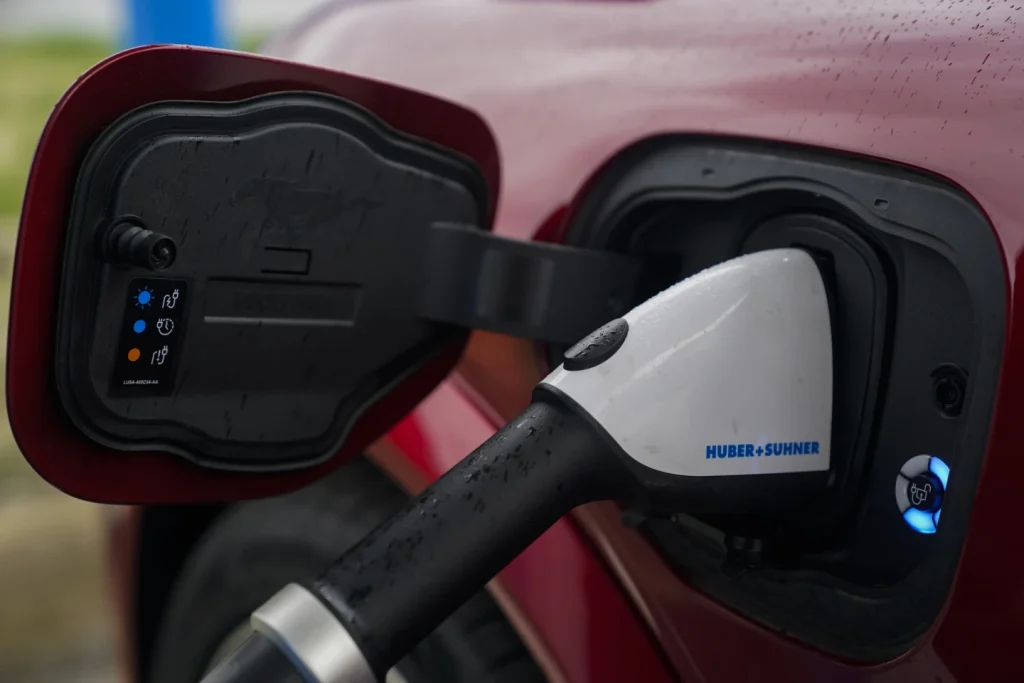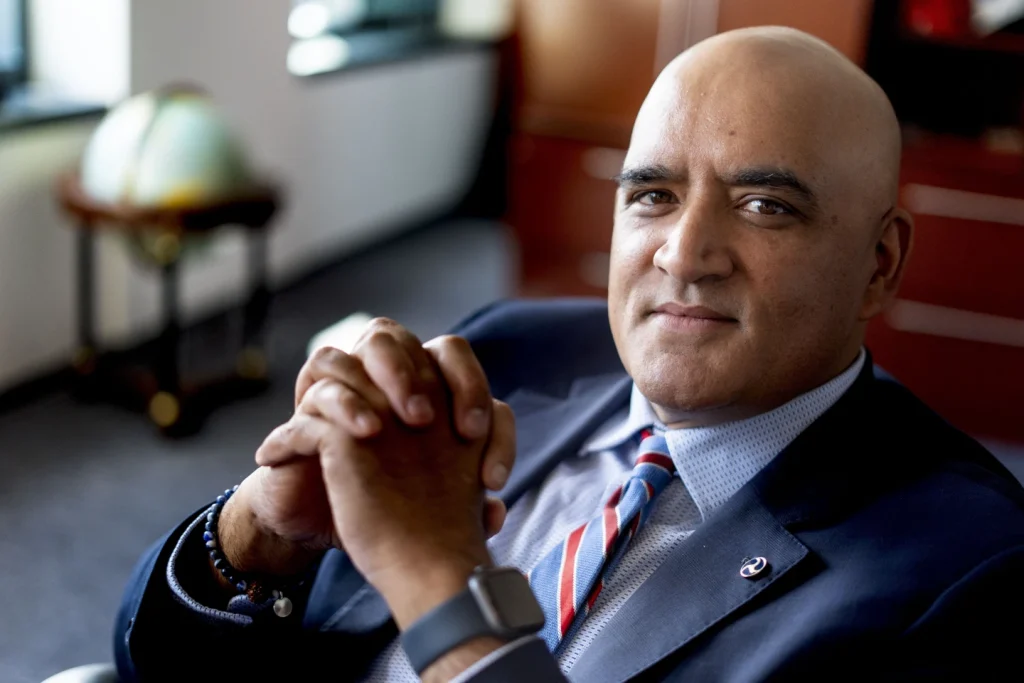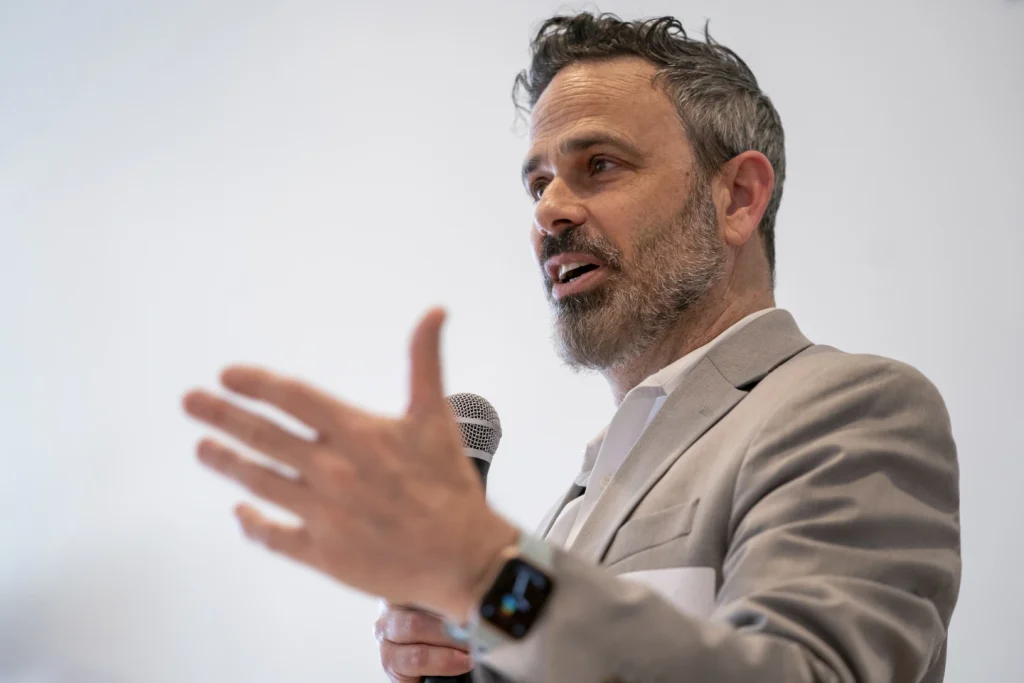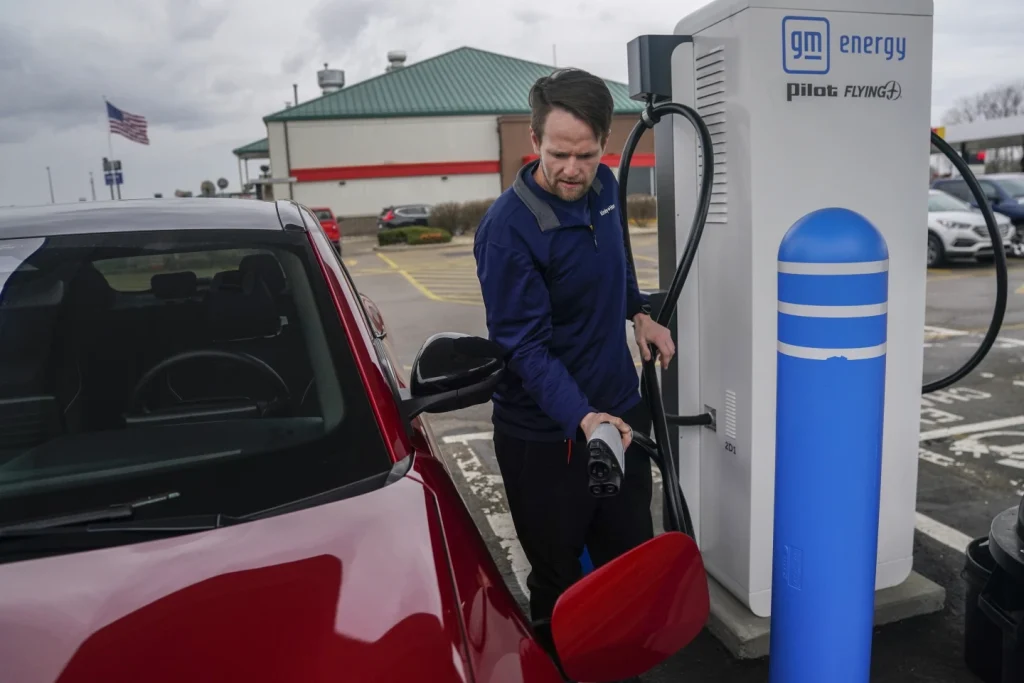The advent of electric vehicles (EVs) marks a pivotal moment in the evolution of transportation, with significant implications for environmental sustainability and energy efficiency.
The narrative of Liam Sawyer embarking on a camping trip in his newly acquired red Ford Mustang Mach-E underscores the increasing popularity and practicality of EVs among consumers.
Positioned as a symbol of technological advancement and environmental consciousness, Sawyer’s journey highlights the seamless integration of EVs into everyday life, facilitated by the expanding network of charging infrastructure across the United States.
The strategic planning involved in Sawyer’s trip, where he meticulously mapped out charging stations along his route, reflects the growing accessibility and convenience of EV charging facilities.
The emergence of public charging stations, such as the one at the Pilot Travel Center in London, Ohio, not only provides essential support for EV drivers but also signifies a broader societal shift towards sustainable modes of transportation.
The utilization of the National Electric Vehicle Infrastructure program, a key component of President Joe Biden’s infrastructure agenda, demonstrates a concerted effort to promote the adoption of EVs and reduce reliance on traditional gasoline-powered vehicles.
President Biden’s ambitious goal of establishing a national network of 500,000 publicly available chargers by 2030 underscores the administration’s commitment to combating climate change and promoting clean energy initiatives.
By incentivizing the transition to EVs through financial incentives and regulatory measures, the government seeks to accelerate the decarbonization of the transportation sector and mitigate the environmental impact of vehicle emissions.
The correlation between EV sales and greenhouse gas emissions reduction underscores the transformative potential of EV technology in addressing the pressing challenges of climate change.
The Biden administration’s emphasis on collaboration with states and private sector partners in expanding charging infrastructure reflects a multi-faceted approach to achieving sustainable transportation solutions.

The allocation of grants to support the development of EV charging stations in various states underscores the importance of public-private partnerships in driving innovation and infrastructure development.
Moreover, the commitment of companies like Walmart to invest in fast-charging stations for EVs highlights the growing momentum behind the electrification of the transportation sector and the emergence of new business opportunities in the clean energy market.
As the transition to EVs gains momentum and the charging infrastructure continues to expand, the vision of a sustainable and environmentally friendly transportation system becomes increasingly tangible.
The convergence of government initiatives, private sector investments, and consumer demand signals a transformative shift towards a cleaner and more efficient transportation ecosystem.
By leveraging technology, policy interventions, and collaborative partnerships, the United States is poised to lead the global transition towards a low-carbon future, where EVs play a central role in reducing emissions and promoting sustainable mobility.
In conclusion, the story of Liam Sawyer’s journey in his red Ford Mustang Mach-E encapsulates the broader narrative of the EV revolution unfolding in the United States.
As charging infrastructure proliferates, EV sales soar, and climate action gains momentum, the transition towards a cleaner and greener transportation system becomes increasingly within reach.
Through concerted efforts at the federal, state, and private sector levels, the United States is paving the way for a sustainable future powered by electric vehicles and renewable energy sources.
The transition towards electric vehicles (EVs) in the United States is gaining momentum as the government, under the leadership of President Biden, aims to significantly reduce carbon emissions and combat climate change.
The commitment to expanding the charging infrastructure for EVs is a crucial aspect of this transition, as highlighted by Gabe Klein, director of the Joint Office of Energy and Transportation, who emphasized the importance of ensuring that Americans have access to charging stations in various locations where they live, work, shop, play, and pray.
Despite the government’s efforts to install 500,000 public chargers, experts from the Department of Energy’s National Renewable Energy Laboratory have expressed concerns that this number may fall short of meeting the ambitious climate goals set by the Biden administration.
The estimation that the U.S. will require 1.2 million public chargers by 2030 underscores the magnitude of the challenge ahead, considering the current availability of only 175,000 public charging ports as reported by the Alternative Fuels Data Center.

The availability of charging stations plays a pivotal role in encouraging Americans to embrace EVs, as highlighted by the findings of a 2023 survey conducted by The Associated Press-NORC Center for Public Affairs Research and the Energy Policy Institute at the University of Chicago.
The survey revealed that concerns about the lack of charging stations, driving range anxiety, and the perceived high costs of EVs are significant barriers preventing many individuals from considering electric vehicles as a viable option for transportation.
In addressing the issue of range anxiety, particularly in rural areas, the government aims to establish charging corridors along U.S. interstates, with the goal of having chargers every 50 miles.
Major charging networks such as Tesla, EVgo, and Electrify America are also focusing on expanding charging infrastructure at strategic locations such as shopping centers, gas stations, and grocery stores to cater to the needs of EV drivers, especially during long-distance travel.
The state of Ohio, led by Republican Governor Mike DeWine, has emerged as a proactive participant in the federal charging initiative, recognizing the importance of electric vehicles in shaping the future of transportation.
Public-private partnerships, such as the collaboration between the state Department of Transportation’s DriveOhio program and federal funding, have played a crucial role in facilitating the development of charging stations and supporting EV adoption in the state.
While progress is being made in deploying charging infrastructure, challenges such as meeting federal requirements, operational standards, permitting delays, and high costs associated with electrical upgrades remain significant hurdles for states with limited experience in implementing such projects.
The varying speeds at which states are progressing in expanding charging infrastructure underscore the complexity of the task at hand and the need for coordinated efforts to accelerate the transition to electric mobility.

In conclusion, the expansion of charging infrastructure for electric vehicles is a critical step towards achieving the climate goals set by the Biden administration and transitioning towards a more sustainable transportation system.
While challenges persist, the collaborative efforts of government agencies, private sector partners, and EV drivers are essential in overcoming barriers and realizing the full potential of electric vehicles in reshaping the future of transportation in the United States.
